Cuisine from the Indian subcontinent, vividly, dazzlingly complex, and now an integral part of the North American gastronomical landscape, is still relatively underexplored in the context of wine. When I began seeking wine pairings for South Asian food, the first wine most sommeliers suggested trying was off-dry riesling or, failing that, a glass of gewürztraminer. The aptness of these couplings notwithstanding, I could not help but be curious about less conventional pairings. “What about paneer butter masala with a side of Niagara Gamay, or biryani and Cerasuolo (a deeply pigmented, flavourful rosé from Abruzzo in Italy)?”, I wondered. My curiosity motivated me to embark on a quest of sorts, seeking wine pairings for classic, representative foods from different parts of the subcontinent.
The biggest obstacle I faced was the sheer scale of the exercise! The Indian subcontinent, made up of Sri Lanka, Maldives, Pakistan, Nepal, Bhutan, Bangladesh, and India, is a vast and gastronomically diverse region. My first task then was to narrow things down. I began by focusing on one sub-region at a time. Starting in North India, I made my way south, then west, and finally, east. Over the course of a series of essays to be published over the next few months, I will outline what I learned on this adventure, with the first instalment being devoted to North India. Dividing my journey through the subcontinent in this manner allows for a more nuanced appreciation of the remarkable heterogeneity of South Asian food culture, leading to a more granular understanding of how wine and different styles of this cuisine interact.
I must provide a caveat at this stage: categories such as “North Indian” and “South Indian” are themselves generalizations. For instance, while the foods I discuss in the context of North India represent iconic and pervasive examples of cuisine that is enjoyed in the sub-region, they are but lines on a page in North India’s gastronomical story. South Indian cuisine is similarly immeasurably diverse. Even focussing on the cuisine of a single city involves a certain degree of simplification. Consider the capital of India, Delhi. Like so many large, old, and storied cities, it has a rich and complex food culture, with people from all over the subcontinent and the world moving to live in it over millennia, bringing with them new ingredients and traditions. Today, many Delhiites enjoy pan-Indian and global cuisine. It is a living, cosmopolitan metropolis in flux.
Attempting to fully explore the depth and breadth of South Asian cuisine is consequently nearly impossible. Considering this, and the fact that South Asian cuisine does not appear immediately amenable to wine-pairing, you may ask why I chose to take on the byzantine task of exploring South Asian food and wine pairings. I was moved to do so by my love of both wine and subcontinental food and the potential affinities between them.
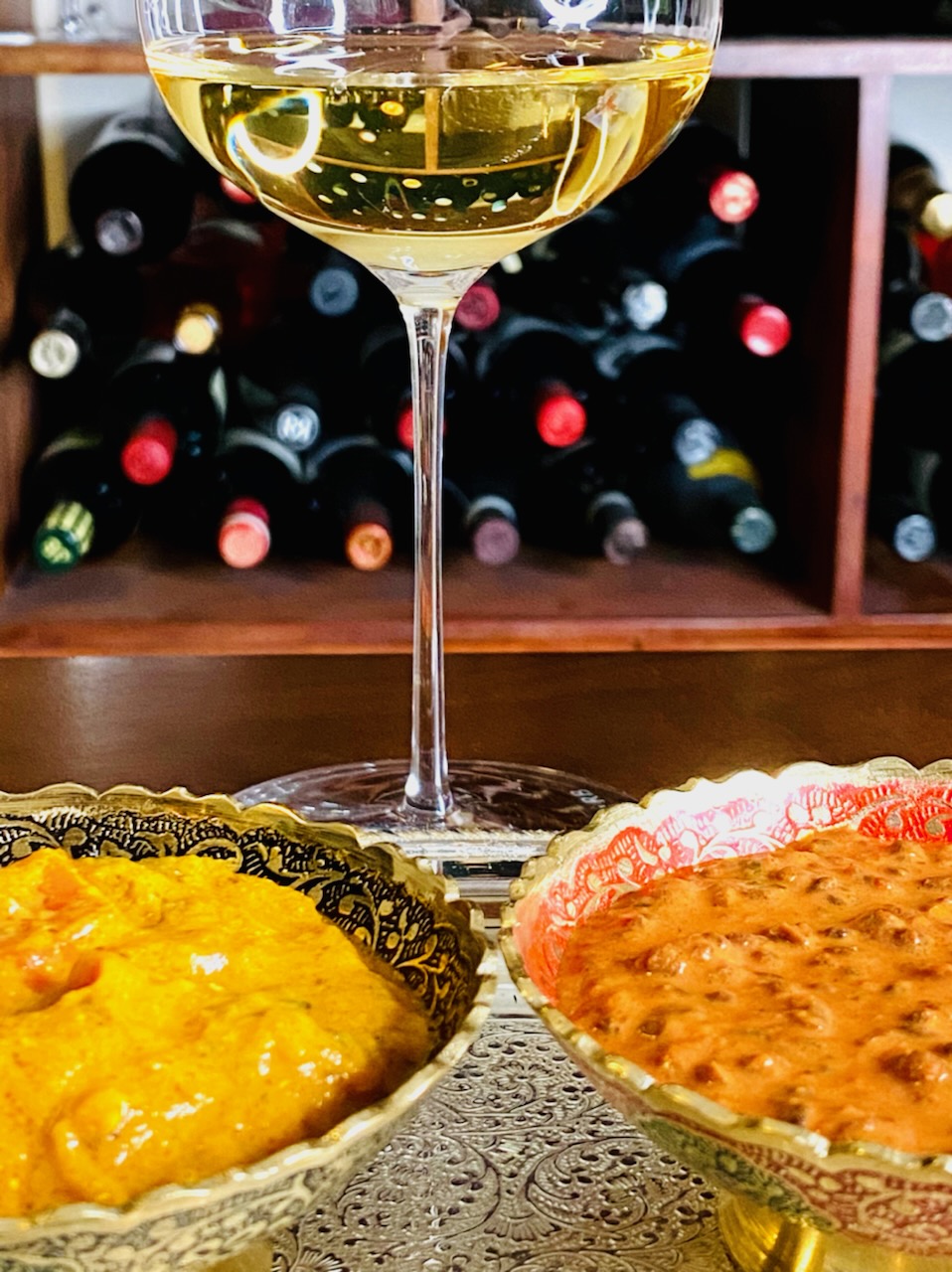
Subcontinental Food and Wine: Exploring Intersections
I grew up on the subcontinent, spending most of my childhood in Hyderabad and then Delhi, before moving to Pune in West India for college. Food has always occupied a central place in my life. In India, almost every social interaction involves food, regardless of the time of day. Between breakfast, lunch, tiffin, and dinner, there is always time for chai and samosas. Food is also a medium by which to express regard, affection, and even love for others. The trope of the parental figure or spouse who lovingly toils in the kitchen for a child or partner, so often portrayed in Bollywood movies, is modelled on innumerable women, and men too, who express their abiding love for others by cooking for them.
If food is a language of love on the subcontinent, it is also a means by which to immerse oneself in history, art, and beauty. South Asian gastronomy encompasses an astonishing array of ingredients, techniques, rituals, and traditions. Centuries, even millennia, in the making, it has absorbed elements from a multiplicity of sources including Chinese, Persian, Arabic, and Turkish influences. It is nothing if not adaptable and evolving, an expression of culture that is fluid and everchanging, both on the subcontinent and amongst diaspora the world over.
As a result, South Asian food displays an incredible amount of regional variation: the cuisines of different sub-regions and communities blend and bleed into one another, while also maintaining distinct identities, like a rich tapestry of intricate patterns and shapes with softly blurred edges rather than sharp lines. To taste this food is thus to travel through time and space, to savour the present and the past, alongside the birth of new traditions, to connect, in an instant, with people and places scattered across the subcontinent.
My love of the beauty and mesmerizing heterogeneity of subcontinental cuisine brought me to wine’s doorstep. I find the history and complexity of wine similarly compelling. Wine, like South Asian food, evolves and changes. It also brings people together, acting as a doorway to faraway places, peoples, and cultures. A song in a bottle, or alchemy realized, it is magic, science, and art, but also a reminder of our mortality. After all, one lifetime is not nearly long enough to fully appreciate the beauty of wine in all its myriad expressions.
Put all this multiplicity and richness together and choosing wine for a South Asian meal can seem perplexing, certainly, but also exciting and filled with the promise of novelty.
A Trip to North India
Several months ago, I had a wonderful dinner with friends that underscored the nuance and complexity, but also the potential for fun, involved in pairing wine with South Asian cuisine. Our predominantly North Indian meal encompassed numerous spices, herbs, and other flavour components. The textural diversity it displayed added a whole new set of parameters to consider when choosing a wine to accompany it.
The meal began with paneer tikka (cubes of paneer marinated in spices and lightly charred in a tandoor). This appetizer was followed by three “entrées”, served simultaneously, that we all shared family style. The first was navratan korma, a creamy, nutty, and slightly sweet sauce with braised assorted vegetables and dried fruits. The second was kadai paneer, in which cubes of paneer, chunks of tomatoes, and sliced bell peppers are cooked in a generous amount of oil and garnished with fresh cilantro. The third entrée was dal makhani. Made with copious amounts of butter and slightly bitter black lentils, simmered for hours with spices, and topped with fresh cream and dried fenugreek leaves, it is the most luxurious of all lentil preparations. All this was served with naan, speckled with garlic and slathered in butter, and rice flavoured with saffron and onions.
By the end of dinner, we were all struck by the countless possible permutations and combinations of North Indian food and wine! Do you have any ideas for what you would pair with this cornucopia of flavours and textures? A lighter style of red wine, maybe? Or perhaps, orange or skin-contact wine?
Coming Up Next
In the next instalment of this series, I will report on my experiments with these and other examples of North Indian food. In the meanwhile, why not order some takeout and raid your wine cellar (or wander through the LCBO) in search of new combinations that work for you?

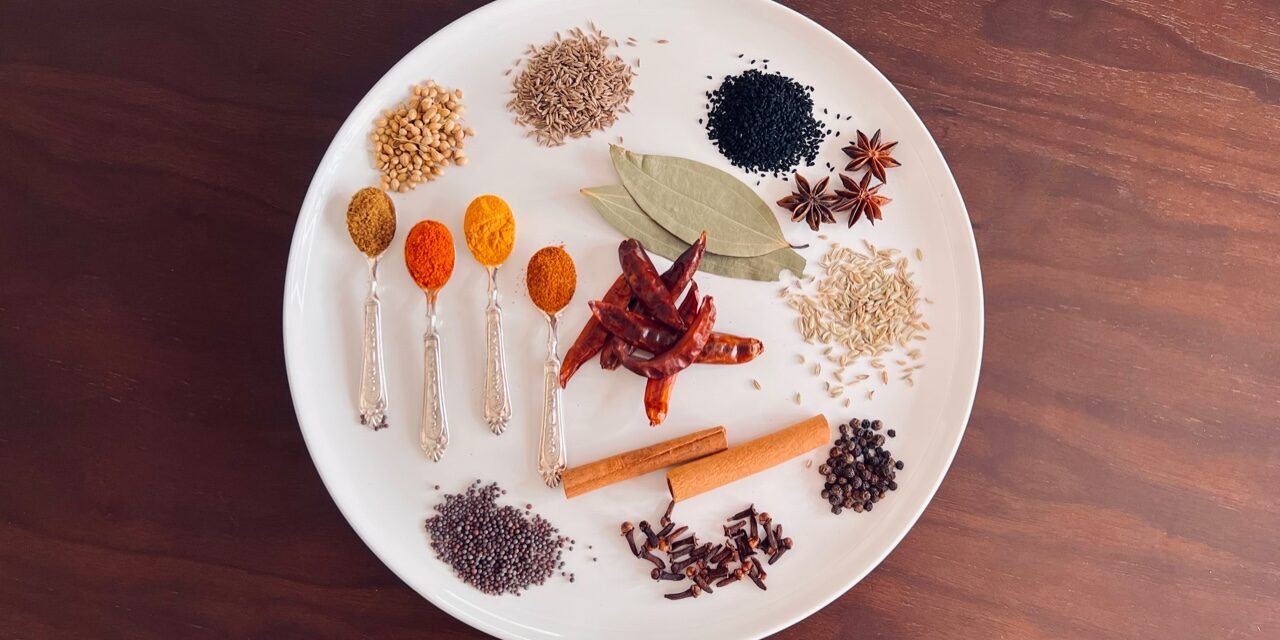

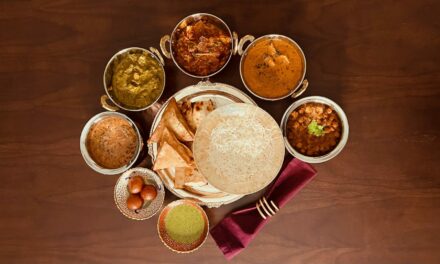
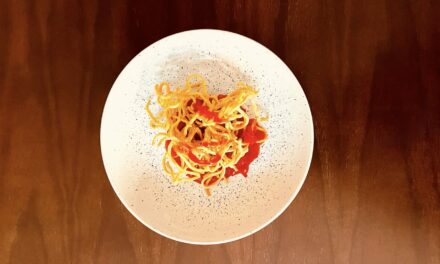
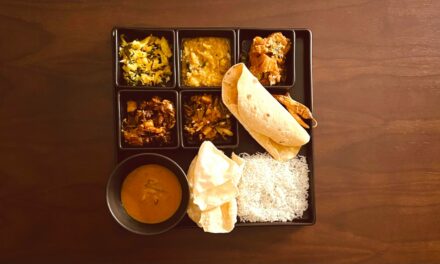
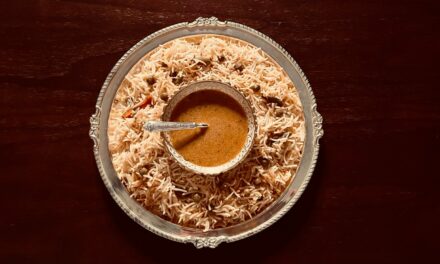

I look forward to read about your experiments Megha.
Thank you, Kenneth! I hope that you will be trying some pairings out as well!